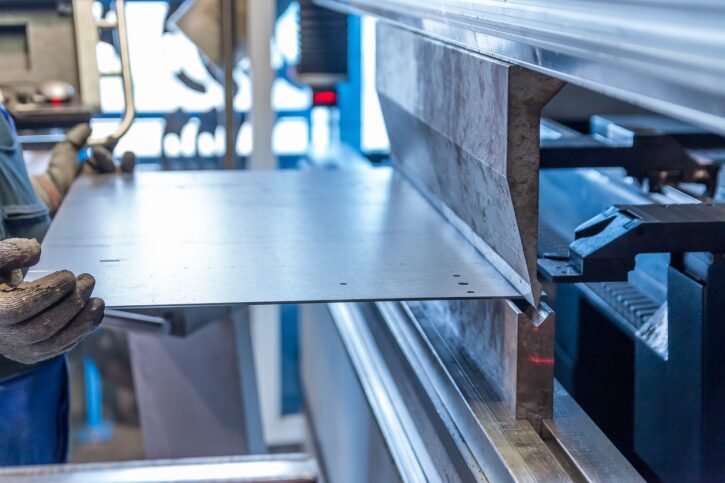
The Future of Press Brake Machines: What to Expect in 2025 and Beyond
Press brake machines have been at the heart of metal fabrication for centuries, revolutionizing the way industries shape and form sheet metal. From manual machines to fully automated systems, press brakes have undergone significant evolution. In this blog, we’ll explore the history of press brake machines, their technological advancements, and what the future holds for these essential machines.
The Early Beginnings: The Birth of the Press Brake
The origins of press brakes trace back to the late 19th century, where the need for more efficient metalworking tools became apparent. Initially, blacksmiths and craftsmen relied on manual hand-powered tools to bend metal sheets. The first press brake machines operated manually, allowing operators to apply force directly to a metal sheet and shape it as needed.
Early press brakes featured a system with a die, a punch, and a ram to bend sheet metal. Despite being primitive compared to today’s standards, these machines played a vital role in shaping metals for industries like construction and shipbuilding.
The Industrial Revolution: Mechanization and the Rise of Hydraulic Power
The industrial revolution in the late 1800s and early 1900s transformed manufacturing processes, including press brake development. Manufacturers introduced mechanical press brakes to meet the growing demand for mass production. These machines used flywheel-driven systems to apply greater force and precision in metal bending.
The invention of hydraulic press brakes in the mid-20th century marked a true breakthrough. Hydraulic systems, powered by fluid pressure, delivered consistent force and allowed operators to control the ram’s speed and apply different forces for varying materials. This advancement revolutionized metal fabrication and set the stage for the modern press brakes we use today.
Modern Press Brake Machines:
Today’s press brakes are products of decades of innovation in materials science, control systems, and automation. Modern machines incorporate advanced sensors, servo-driven motors, and high-tech software to monitor and adjust bending processes in real time.
Key features of modern press brakes include:
- Electric Press Brakes:
While hydraulic press brakes are still widely used, electric press brakes have gained popularity due to their energy efficiency. These machines use electric drives instead of hydraulic systems to generate force, which results in lower energy consumption, reduced maintenance, and a more environmentally friendly operation.
- Advanced CNC Controls:
With the advent of smart controls, modern press brakes can adjust parameters like bending force, speed, and angle in real-time based on the material being processed. Operators can also visualize the bending process on a screen, making it easier to detect errors before they occur.
- Automation and Robotics:
Today, many press brake machines are integrated with robotic arms for loading, unloading, and tool-changing. These systems increase throughput and reduce downtime, making it possible to run machines for longer periods with minimal operator intervention.
The Future of Press Brake Machines: What’s Next?
As we look towards the future, press brake machines will continue to evolve in response to the demands of the modern manufacturing landscape. Here are a few key trends and developments to expect:
1. Smarter and More Connected Machines
Future press brakes will feature advanced sensors and AI capabilities, optimizing bending processes in real-time by analyzing data like material thickness, type, and machine health. Industry 4.0 and IoT integration will enable seamless communication across machines, improving overall production efficiency.
2. Increased Automation and Robotics
Automation will continue to play a significant role in the evolution of press brake technology. The future will see even more collaborative robots (cobots) integrated into the press brake machines, assisting operators in handling materials, changing tools, and performing quality checks. This integration will make press brakes more versatile and adaptable to a wider range of production environments.
3. 3D and Multi-Function Press Brakes
The future will bring machines capable of complex 3D bending and multi-dimensional shapes, streamlining production. Multi-functional press brakes will combine bending, punching, shearing, and forming in one unit, reducing the need for multiple machines.
Rajesh Machines: Leading the Way in Press Brake Evolution
At Rajesh Machines, we lead innovation in press brake technology, offering cutting-edge solutions that meet the growing demands for precision and efficiency in metal fabrication. Our advanced hydraulic and CNC press brakes incorporate the latest technologies to deliver high performance, reduced downtime, and energy-efficient operations.
We prioritize automation and smart technologies, integrating advanced control systems and robotic solutions into our press brakes. Our machines deliver exceptional precision, reliability, and versatility, catering to industries such as automotive, aerospace, and construction.
Conclusion: A Continuous Journey of Innovation
The history of press brake machines reflects industries’ increasing demands for precision, speed, and adaptability. From the humble beginnings of manual tools to today’s advanced CNC systems, press brakes have come a long way.
As we move into 2025 and beyond, press brakes will continue to evolve, driven by automation, smarter controls, and energy efficiency. At Rajesh Machines, we remain committed to staying at the forefront of innovation, helping our customers adapt to the evolving metal fabrication landscape. Whether through automation, new materials, or advanced technologies, the future of press brakes is bright and full of possibilities.

